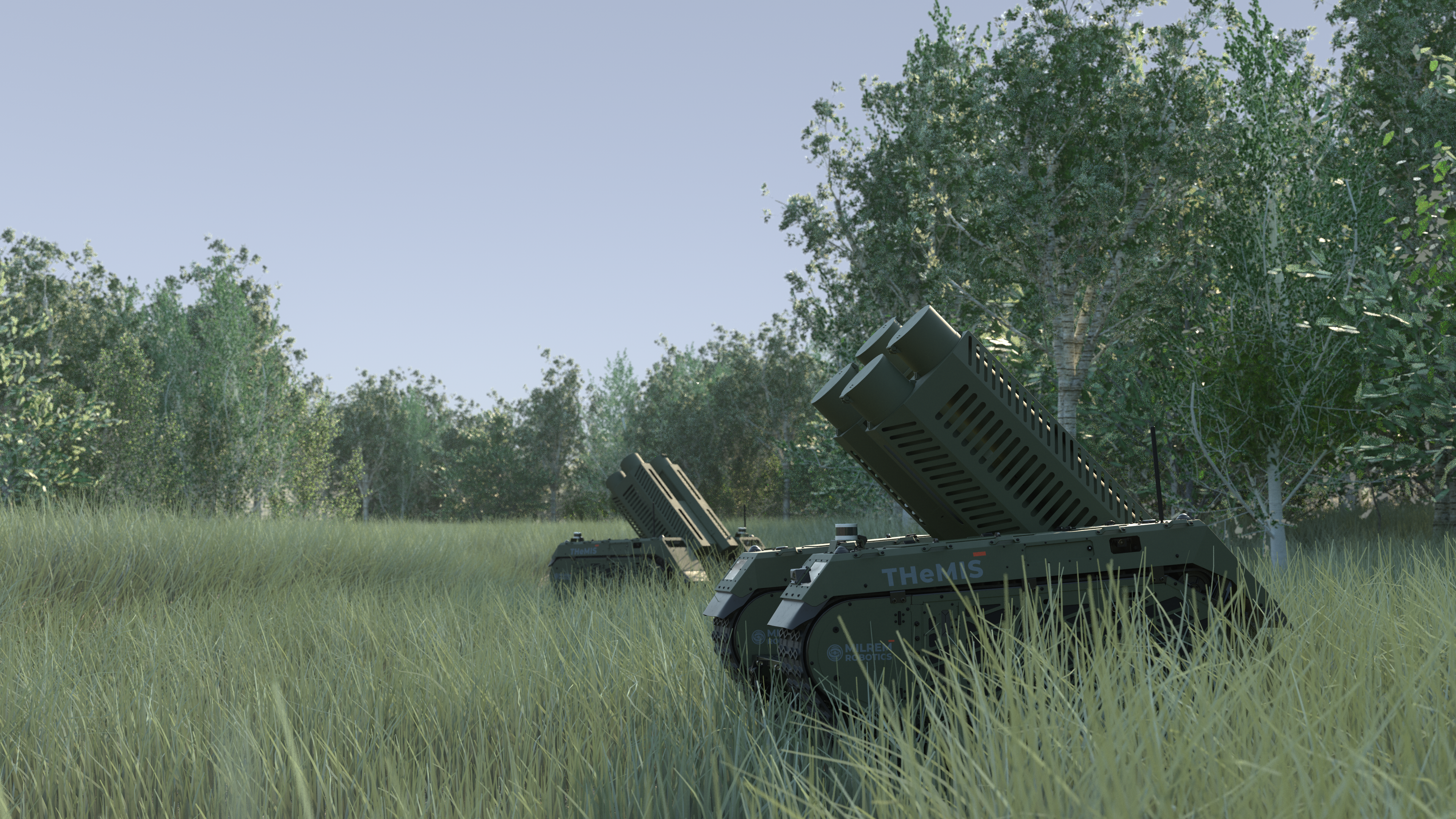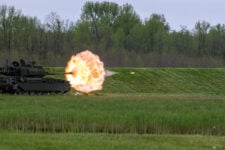
The Estonian defense firm Milrem Robotics, owned in part by UAE conglomerate EDGE Group, unveiled a new marriage between its ground vehicle and an EDGE subsidiary’s loitering munition at DSEI 2023. (Milrem Robotics)
BEIRUT — Just months after a UAE defense conglomerate bought a majority stake in an Estonian robotics firm, the two have managed to marry their technology, integrating an Emirati suicide drone with the eastern European unmanned ground vehicle.
On the second day of DSEI taking place in London, Tallin-based Milrem Robotics’ THeMIS Combat Unmanned Ground Vehicle (UGV) made its debut equipped with the Halcon-made Hunter 2-S loitering munition, which allows “engagement farther behind enemy lines,” according a statement by Milrem Wednesday.
Hunter 2-S is the first UAE-made drone with swarming technology in which each drone can share data and communicate with the others, and had been expected to enter production in 2025. Halcon is one of many subsidiaries of the UAE defense conglomerate EDGE Group.
The drones’ payload is two kilograms each, and they have a “cruising altitude of 500 [meters] and cruise at an indicated airspeed of 25 [meters per second, approximately 56 miles per hour] with a total available flight time of 45 minutes,” according to a statement by Milrem Robotics and EDGE. A photo published with the release suggests the overall system can carry four Hunter 2-S drones.
“Units can manoeuvre the THeMIS Combat with Hunter 2-S drones closer to the enemy line. This allows them to engage closer targets faster or venture farther behind the lines to find suitable targets,” Milrem R&D chief Juri Pajuste said in the release. He added that deploying robotic systems across enemy lines is considerably faster and more efficient than using manned units for the same task.
Ryan Bohl, senior Middle East and North Africa analyst at the RANE network, told Breaking Defense that on the tactical side, the value of drone swarm is still somewhat of a question, and suggested the combined system has its limitations in long-range combat.
“One downside of the Hunter 2-S is it’s relatively small range… so a UGV carrying such a system must still cross a fair bit of ground to deploy such systems against enemy forces. Compared to longer-range, and aerial-based, swarms, that’s a disadvantage,” Bohl said.
But, he said, the combined system gives another tool for EDGE further potential sales in Europe, given that a UGV does provide force protection in a way that some European states would be interested.
“As places like Sweden and Poland lead the continent in their military build ups, the THeMIS UGV/Hunter 2-S will be one option some of these militaries could consider for recon/swarm attack options,” he said.
RELATED: Poland’s top general, armed with ‘suitcases’ full of money, looks to replenish stocks
Elsewhere at the show, EDGE announced the signing of an agreement with Singapore’s ST Engineering to share expertise and solutions in their respective regional markets, “in the areas of small calibre ammunition, unmanned systems, future soldier systems, and training & simulation,” according to their announcement at the show — the latest move in EDGE’s international business plays.
Aloha: Fixes ongoing, then Army’s new watercraft prototype is Hawaii bound for testing
“Everything that we can knock off that list we will do in the archipelago…because that allows us to do the tests in the environment that the vessel will operate in ultimately,” said Maj. Gen. Jered Helwig.


























